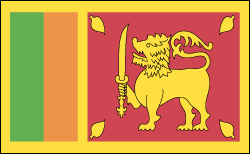Sri Lanka History


A Brief, Ineffectual Cease-Fire
After Dec. 2001 elections, Ranil Wickremesinghe, a longtime bitter rival of President Kumaratunga, was sworn in as prime minister. Wickremesinghe's victory precipitated a formal cease-fire with the Tamil rebels, signed in Feb. 2002. In September talks, the government lifted its ban on the group, and the Tigers dropped their demand for an independent Tamil state. Another significant breakthrough came in December when the Tigers and the government struck a power-sharing deal that would give the rebels regional autonomy. But negotiations in 2003 achieved little.
Intense political rivalry threatened the peace process. In Nov. 2003, President Kumaratunga, convinced that Prime Minister Wickremesinghe was too soft in his negotiations with the Tigers, wrested away some of his powers. In Feb. 2004, the president dissolved parliament and called for elections in the hope of further eroding the power of the prime minister. The gamble paid off for Kumaratunga—her United People's Freedom Alliance won April's parliamentary elections, and Wickremesinghe was replaced by a new prime minister, Mahinda Rajapaksa, a high-ranking member of Kumaratunga's party.
On Dec. 26, 2004, a tremendously powerful tsunami ravaged 12 Asian countries. About 38,000 people were reported killed in Sri Lanka. President Kumaratunga and the Tamil Tigers reached a deal in June 2005 to share about $4.5 billion in international aid to rebuild the country. But intensifying violence in the eastern part of the country threatened the cease-fire and jeopardized the aid package. In Aug. 2005, Foreign Minister Lakshman Kadirgamar was assassinated and the government declared a state of emergency.
Prime Minister Mahinda Rajapaksa won November's presidential elections, taking 50% of the vote to former prime minister Ranil Wickremesinghe's 48%. Rajapaksa is expected to take a hard line with the Tamil Tigers. Rajapaksa appointed Ratnasiri Wickremanayaka as prime minister.







